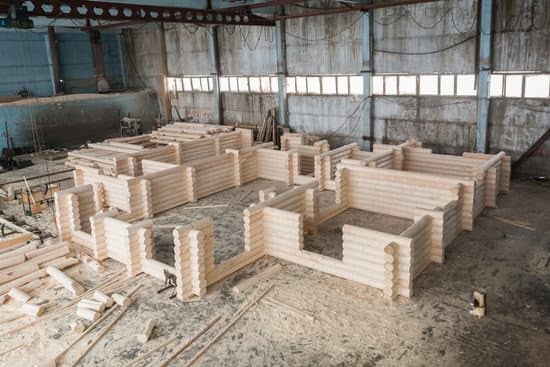Woodworking is a beloved hobby and profession for many enthusiasts, but it is also important to prioritize safety when embarking on any woodworking project. One crucial aspect of safety that should never be overlooked is the use of a mask. In this blog post, we will explore the reasons why wearing a mask during woodworking is so crucial, as well as the potential health risks associated with woodworking without proper protection.
Woodworking involves working with various types of wood, and each type produces its own unique dust particles. These fine particles might seem harmless at first, but they can pose serious health risks if inhaled regularly over time. From respiratory issues to long-term health problems, such as allergies or even cancer, the dangers of wood dust exposure cannot be underestimated. Additionally, many wood finishes and solvents contain harmful chemicals and toxins that can also negatively impact your health.
The purpose of this blog post is to educate readers on when and why they should use a mask during woodworking. By understanding the potential hazards associated with woodworking and becoming aware of appropriate safety measures, you can better ensure your well-being while pursuing your woodworking passion. So let’s delve into the importance of protecting yourself with a mask and explore when exactly you should be using one during woodworking projects.
Understanding the potential hazards
Woodworking can be a rewarding and fulfilling hobby, but it is important to understand the potential hazards associated with it. One of the main risks in woodworking is exposure to wood dust, which can lead to respiratory issues and long-term health problems if not properly managed. This section will provide an overview of the different types of wood dust and their dangers, as well as the importance of protecting yourself from harmful chemicals and toxins found in wood finishes.
There are several types of wood dust that woodworkers should be aware of. Fine dust particles, such as those produced by sanding or sawing, can easily be inhaled and can penetrate deep into the lungs. These particles can cause irritation and inflammation in the respiratory system, leading to symptoms such as coughing, wheezing, and shortness of breath. Prolonged exposure to fine dust particles can also increase the risk of developing conditions such as asthma or chronic bronchitis.
In addition to fine dust particles, certain types of wood can also release toxic chemicals when cut or sanded. For example, some tropical hardwoods contain natural oils that can cause allergic reactions or skin irritation. Wood finishes and solvents used in woodworking projects may also contain volatile organic compounds (VOCs) that can be harmful if inhaled or absorbed through the skin. It is important to protect yourself from these chemicals by wearing a mask and gloves when working with them.
| Type of Wood Dust | Dangers |
|---|---|
| Fine Dust Particles | – Irritation and inflammation in the respiratory system
|
| Wood with Natural Oils | – Allergic reactions
|
| Wood Finishes and Solvents | – Inhalation or absorption of harmful chemicals
|
When to wear a mask
When working with power tools that produce heavy dust
One of the most crucial times to wear a mask during woodworking is when using power tools that generate significant amounts of dust. Power tools such as circular saws, routers, and sanders can create large volumes of fine particles that become airborne and easily inhaled. Without proper protection, these tiny particles can enter your lungs and cause respiratory issues. Therefore, it is essential to wear a mask whenever you use power tools that produce heavy dust.
Using a mask during sanding, sawing, or cutting wood
Sanding, sawing, and cutting wood are primary activities in woodworking projects that often lead to the creation of wood dust. These processes produce fine particles that can be harmful if inhaled regularly over time.
Even if you’re only working with small pieces of wood or doing minimal cutting, it’s still important to wear a mask because even a short exposure to wood dust can have long-term health consequences. By wearing a mask during these activities, you significantly reduce the risk of inhaling hazardous wood particles.
Recommended mask usage when applying wood finishes or solvents
In addition to protecting yourself from wood dust, wearing a mask is also necessary when applying wood finishes or working with solvents. Wood finishes often contain chemicals and toxins that can be harmful when inhaled or absorbed through the skin.
Whether you’re brushing on varnish or spraying lacquer, it is essential to wear a mask specifically designed for chemical exposures to avoid health risks associated with these substances. Similarly, if you’re using solvents for cleaning purposes or other woodworking tasks, make sure to protect yourself by wearing an appropriate mask.
By following these guidelines on when to wear a mask during woodworking projects, you greatly reduce the chances of experiencing adverse health effects caused by wood dust or harmful substances found in finishes and solvents. Prioritizing your safety by wearing a mask will help ensure that you can continue enjoying your woodworking hobby or profession for years to come without compromising your health.
Types of masks for woodworking
Understanding the different types of masks available for woodworking is essential to ensure your safety and protection from wood dust and harmful chemicals. There are various options to choose from, including disposable masks, reusable masks, and N95 respirators.
Disposable masks vs. reusable masks: pros and cons
Disposable masks are a popular choice for woodworking because they are convenient and easy to use. They provide a basic level of protection against wood dust particles, but they should be replaced after each use or when they become moist or damaged. The main advantage of disposable masks is their affordability and the ability to dispose of them once they are no longer effective.
On the other hand, reusable masks offer a more sustainable option for woodworking projects. These masks are typically made of durable materials such as silicone or neoprene, which can be washed and reused multiple times. While reusable masks may require a higher upfront cost compared to disposable ones, they can be more cost-effective in the long run.
N95 respirators: their effectiveness and suitability for woodworking
N95 respirators are considered the gold standard in respiratory protection due to their high filtration efficiency. These masks are designed to filter out at least 95% of airborne particles, including fine wood dust particles that may pose serious health risks. N95 respirators provide a tight seal against the face and have adjustable nose clips to ensure a secure fit.
When it comes to woodworking, N95 respirators are particularly suitable for tasks that generate heavy amounts of dust such as sanding or cutting hardwoods. They offer superior filtration performance compared to regular disposable or reusable masks. However, it is important to note that N95 respirators should only be used by individuals who have been properly trained on how to wear them correctly.
Additional features to consider when purchasing a mask for woodworking
When selecting a mask for woodworking, there are several additional features that you should consider to maximize both comfort and protection. Some masks come with exhalation valves, which help to reduce heat buildup and make breathing easier. Others may have adjustable straps or headbands to ensure a secure fit and prevent slippage during use.
It is also worth noting that some masks are compatible with interchangeable filters or cartridges, allowing you to customize your level of filtration based on the specific hazards of your woodworking project. Look for masks that have filters or cartridges certified by reputable organizations such as NIOSH (National Institute for Occupational Safety and Health) or EN 149, which indicate the mask’s effectiveness in filtering out specific contaminants.
Choosing the right mask for the job
When it comes to woodworking, selecting the appropriate mask is crucial to ensure your safety and protect yourself from potential health hazards. There are several factors to consider when choosing a mask for woodworking, including comfort, fit, breathability, and matching the mask to the specific hazards of your project.
One important aspect to understand is mask ratings and certifications. These certifications indicate the level of protection that a mask provides against different types of particles or contaminants. The National Institute for Occupational Safety and Health (NIOSH) certification is commonly used in the United States. European masks may have EN 149 certification. Understanding these ratings can help you make an informed decision when selecting a mask.
Comfort and fit are key considerations when choosing a mask for woodworking. You will likely be wearing it for extended periods, so it’s important to find one that feels comfortable on your face without causing any discomfort or irritation. A mask should also provide a proper seal around your nose and mouth to prevent any particles from entering.
Breathability is another crucial factor to consider. Woodworking can be physically demanding at times, so it’s important to choose a mask that allows you to breathe comfortably while still providing adequate protection. Look for masks with valves or vents that allow heat and moisture to escape, which can increase comfort during prolonged use.
Lastly, it’s essential to match the mask with the specific hazards of your woodworking project. Different tasks may produce varying levels of wood dust or exposure to chemicals and toxins found in finishes and solvents. Take into account the type and volume of wood dust generated during sanding or cutting, as well as any additional chemical exposures you may encounter during finishing work.
By considering these factors – including comfort, fit, breathability, and matching the mask to specific hazards – you can choose the right mask for your woodworking projects. Prioritizing your health and safety by wearing an appropriate mask will help minimize potential risks and ensure a safer woodworking experience.
Proper mask maintenance and care
Once you have chosen the right mask for your woodworking needs, it is essential to understand how to properly maintain and care for it. Regular upkeep ensures that your mask remains effective in providing adequate protection against wood dust and harmful chemicals. Here are some guidelines on how to clean, store, and replace your masks:
- Cleaning reusable masks: Reusable masks should be cleaned regularly to remove dirt, debris, and contaminants that may accumulate on the surface. Follow the manufacturer’s instructions for cleaning your specific mask type. In general, most cloth masks can be hand-washed with mild soap or detergent and warm water. Rinse thoroughly and allow the mask to air dry before reusing it.
- Storing reusable masks: After cleaning, store your reusable mask in a clean, dry place where it will not be exposed to dust or other contaminants. A breathable bag or container can help protect the mask when not in use. Avoid folding or crumpling the mask excessively as this may damage its shape and effectiveness.
- Replacing filters or cartridges: If your mask has replaceable filters or cartridges, follow the manufacturer’s recommendations for replacement intervals. These components can become clogged over time, reducing their effectiveness in filtering airborne particles. Regularly inspect the filters or cartridges for signs of damage or excessive dirt accumulation.
- Ensuring proper seal and fit: A crucial aspect of mask maintenance is ensuring a secure seal and proper fit on your face. Masks should be snug but comfortable without gaps around the edges. Adjust any straps or nosepieces as necessary to achieve a tight seal against your skin.
By incorporating these maintenance tips into your woodworking routine, you can extend the life of your masks while maintaining their protective qualities during each project.
Table
| Maintenance Steps | Description |
|---|---|
| Cleaning reusable masks | Hand-wash with mild soap and warm water, rinse thoroughly, and air dry. |
| Storing reusable masks | Store in a clean, dry place in a breathable bag or container. |
| Replacing filters or cartridges | Follow manufacturer’s recommendations for replacement intervals and inspect for damage or dirt accumulation. |
| Ensuring proper seal and fit | Masks should be snug but comfortable without gaps around the edges; adjust straps or nosepieces as necessary. |
Proper mask maintenance is crucial to ensure that your mask remains effective in protecting you from wood dust and harmful chemicals. By following these steps, you can prolong the life of your mask while maximizing its protective capabilities.
Other safety measures for woodworking
Proper ventilation in your workspace
In addition to wearing a mask, proper ventilation is a crucial safety measure that should not be overlooked during woodworking projects. Woodworking can release a significant amount of dust and fumes into the air, which can pose serious health risks if inhaled. By ensuring good airflow and ventilation in your workspace, you can minimize the concentration of harmful particles and chemicals in the air.
One way to achieve proper ventilation is by having windows or doors open to allow fresh air to circulate. If this is not possible, consider using exhaust fans or portable air purifiers to remove contaminated air from the space. It’s important to note that proper ventilation is especially crucial when working with toxic substances such as wood finishes or solvents, as these can release volatile organic compounds (VOCs) into the air.
Wearing safety glasses and hearing protection
While wearing a mask is vital for protecting your respiratory system, it’s equally important to safeguard other parts of your body during woodworking. Safety glasses should always be worn to shield your eyes from flying debris and wood shavings that may result from sawing or sanding. Without adequate eye protection, you risk getting foreign objects lodged in your eyes that could cause severe damage.
Additionally, working with power tools often involves loud noises that can potentially damage your hearing over time. Therefore, wearing appropriate ear protection such as earmuffs or earplugs is essential for reducing the risk of long-term hearing loss.
Using dust collection systems or shop vacuums
To further minimize wood dust in your workspace and maintain a clean environment, consider investing in dust collection systems or shop vacuums specifically designed for woodworking. These devices are designed to capture and remove airborne particles and debris while you work, preventing them from accumulating on surfaces and being re-released into the air when disturbed.
Dust collection systems can be connected to your power tools, such as table saws or sanders, to capture dust at the source. Shop vacuums, on the other hand, are portable units that can be used to clean up dust and debris from various areas in your workspace. By effectively removing wood dust, these systems not only contribute to a healthier environment but also minimize the risk of fire hazards associated with dust accumulation.
By incorporating proper ventilation, wearing safety glasses and hearing protection, and utilizing dust collection systems or shop vacuums, you can enhance safety measures in your woodworking space beyond just wearing a mask. These additional precautions will help protect you from potential hazards and ensure a safer and more enjoyable woodworking experience.
Conclusion
In conclusion, the importance of wearing a mask during woodworking cannot be overstated. Throughout this blog post, we have highlighted the potential hazards that woodworkers face, such as wood dust exposure and exposure to harmful chemicals in wood finishes. By understanding these hazards and when to wear a mask, woodworkers can significantly reduce their risk of respiratory issues and long-term health problems.
It is crucial to wear a mask when working with power tools that produce heavy dust, during activities like sanding, sawing, or cutting wood. Additionally, masks should be used when applying wood finishes or solvents. Choosing the right mask for the job is also essential. Understanding mask ratings and certifications is important in order to ensure that the chosen mask provides adequate protection.
Proper maintenance and care of masks are necessary for maximum protection. This includes cleaning and storing reusable masks correctly, as well as knowing when to replace filters or cartridges. It is also vital to ensure a proper seal and fit for the mask to be effective.
In all woodworking projects, it is essential to prioritize health and safety measures. Alongside wearing a mask, proper ventilation in the workspace should be ensured. Wearing safety glasses and hearing protection in addition to a mask will provide comprehensive protection. Using dust collection systems or shop vacuums to minimize wood dust will further reduce risks.
Frequently Asked Questions
Should you wear a mask while woodworking?
Wearing a mask while woodworking is highly recommended. Woodworking involves various processes that release fine dust particles and potentially harmful fumes into the air. These can pose health risks when inhaled, leading to respiratory problems or irritations. Wearing a mask serves as a protective barrier, filtering out these particulates and preventing them from entering your respiratory system.
Should you wear a dust mask when woodworking?
Yes, it is advisable to wear a dust mask when woodworking. Dust masks are specifically designed to filter out small particles such as sawdust and wood particles that are generated during sanding, cutting, or drilling wood.
These masks come with different filtration levels to provide varying degrees of protection, so selecting one appropriate for woodworking enables you to minimize the amount of dust you breathe in while working.
Is it OK to sand wood without a mask?
It is not recommended to sand wood without wearing a mask. Sanding wood produces an abundance of fine particles that can easily become airborne and be inhaled into your lungs if proper precautions are not taken.
Even though the size of individual wood particles may seem harmless, long-term or repeated exposure could result in respiratory issues or other health problems. Therefore, using a mask when sanding wood helps mitigate any potential risks by minimizing your exposure to harmful dust particles.

Hi everyone! I’m a woodworker and blogger, and this is my woodworking blog. In my blog, I share tips and tricks for woodworkers of all skill levels, as well as project ideas that you can try yourself.





